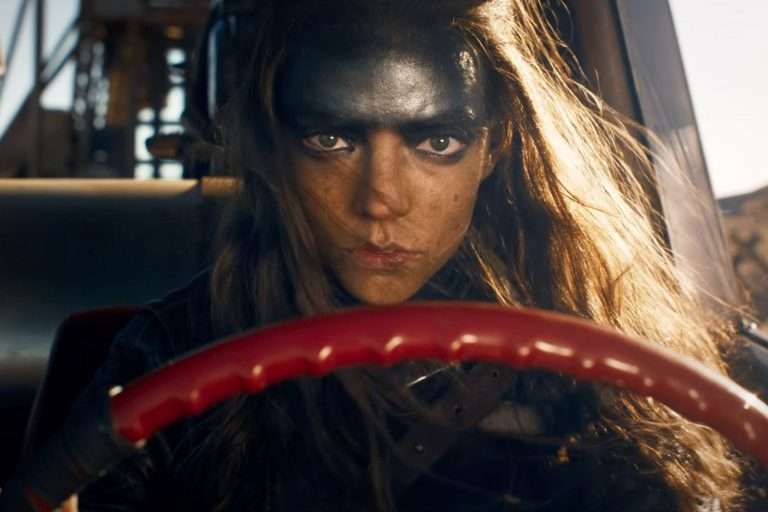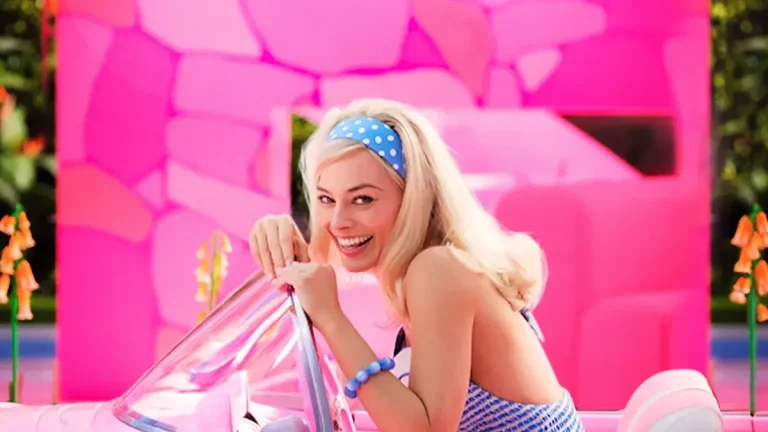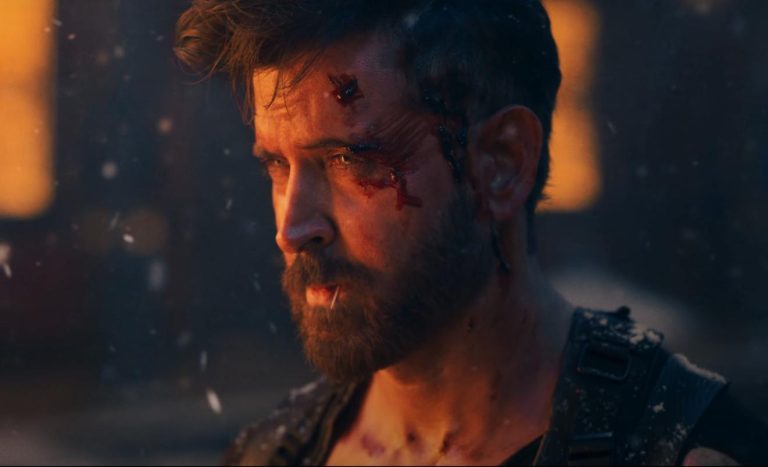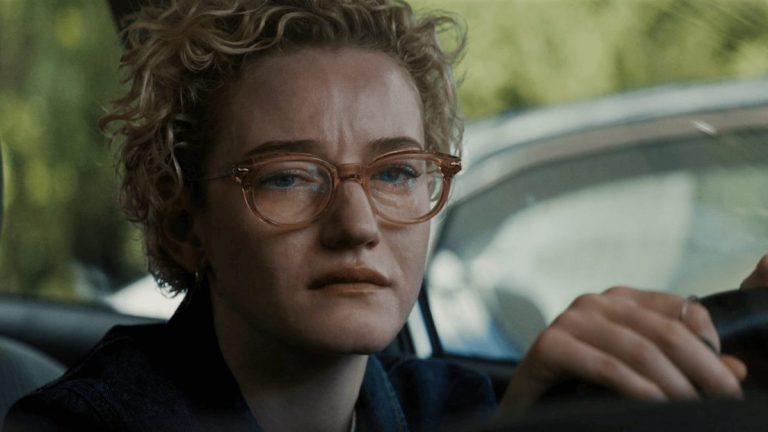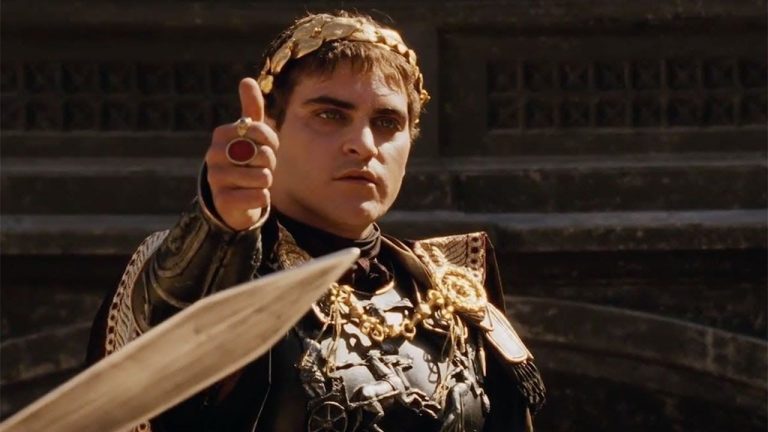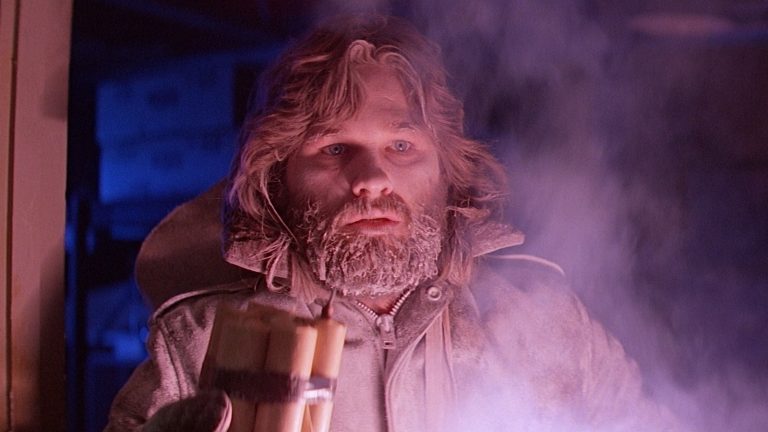An unabashed provocateur of modern (or, arguably, postmodern) cinema, Michael Haneke is a punishing filmmaker who demands quite ruthlessly of his viewer’s intellect more than their attention. The power of his mesmerizing, avant-garde cinema comes from his cold, clinical inquiries into a warped humanism we rarely see in cinema, primarily because of its impudence and horror, to a narrative treatment. Haneke’s cinema is crafted like interactive experiments – the audience is aware of their role as viewers, and the film, more times than ever deviates from conventionality, and he denies us the pleasure of catharsis.
Haneke is unflinching in his explorations of violence, mass media, class, voyeurism (the gamut of media theory, basically), and contemporary urban maladies that emerge from the inextricable intersections of various systems of power and culture. His films demonstrate heartlessness and coldness—Methodism, rigor, and brutality form the DNA of his narratives. Haneke takes on the terrifying and often elusive task of uncovering facets of the human psyche that are, ultimately, human in all its twisted glory.
Born in Austria to a family of artists (both his parents were actors), Haneke got his big break at the not-so-late age of 46, emerging from a career in television and advertising with “The Seventh Continent.” Ever since his gobsmacking debut film, his films have had a consistent confidence and style – distinctly idiosyncratic dissections into the giant bubbles and small lives of people living obliviously in an increasingly globalized world. From a post-apocalyptic drama to an unlikely love story, Haneke unmasks the oblique nature of what it means to live, love, and define our position in our abstract, technological existence, with labels melting away and emotions clouded beyond rational understanding.
Haneke is a filmmaker of multiplicities; he shoots in his mother tongue and French. He’s even remade his own film in English; he’s both a modern and postmodern filmmaker; he shoots ultraviolence with an academic eye and domestic dramas with a horror director’s sensitivity, films with a straight narrative, and films whose narratives are fractured and puzzling. But a commonality connects them, almost like they are grounded in a shared universe – the protagonists are almost always ‘Anne’ and ‘Georges,’ technology is a pivotal cog in the narrative engine. There is an unshakeable dread looming in every moment.
His universes are simulations; every action has a reaction, every mysterious circumstance comes with a tangible consequence, people get hurt, they do good things, bad things, irrational things, human things. A familiar gripe moviegoers have with his films is that it’s depressing and nauseating. Rightfully so, because cinema to Haneke isn’t an escape but a phenomenological inquiry into the cracks of a broken system, ironically granting us access to its enigmatic workings. Bureaucratic portrayals of human relations, the arbitrary violence of our daily existence reduced to entertainment, the constant apathy and ignorance and evil of man – Haneke is hellbent on getting to the bottom of these elusive, challenging ideas and gets to it, bare-knuckled, flaying apart the invisible hide of a hyper-capitalist society hurtling towards its unavoidable doom.
If you like your existential crises cold and numb, look no further. Michael Haneke serves precisely that and some more. Here’s a ranking of the Austrian auteur’s filmography.
12. 71 Fragments of a Chronology of Chance (1994)
71 scenes and 71 collections of minutes. Seventy-one pieces of a puzzle form a perfectly sensible picture. Seventy-one structured realities, disconnected but life-like, independent of context, alienated in their relation to the scenes before and after it, yet they all coalesce in their final moments for a violent portrait of destruction. It’s unnerving to watch “71 Fragments of a Chronology of Chance”; its structure denies viewers any connection to the events presented on screen. The scenes are brief, mechanical, and seemingly senseless – the information is asymmetric, and an undercurrent of ambiguity hazes rational imposition.
Haneke further subverts our pressing need for catharsis with an unlikely ending because the climax creeps up on you; a commonality becomes apparent in the last 20 minutes, hitting you like a truck. In this deconstructionist tale of human connection and miscommunication, the stories of its characters are plucked and laid out in parallel lines, only converging at the final moments for Haneke’s now iconic burst of violence.
The seemingly disparate lives of a Romanian immigrant, a father, a couple adopting a child, and a college student confirm Haneke’s thesis that a large part of chaos comes from the friction created by our overlapping social intersections. There’s a lot of merit here, but his post-structuralist posturing might taint your judgment of how he approaches this simple story. More academic than entertainment, I like to think of this movie as cud; you’ll need to chew on it a couple of times before you can fully digest it.
11. Benny’s Video (1992)
Eerily prescient and starkly shot, “Benny’s Video” taps into an age-old vein of concern everyone has about the Internet. Heisei-era Internet anxiety in Japanese cinema captured, with stunning variety and style, the future of an increasingly interconnected world and the profound wonder (and horror) of the World Wide Web. Filmmakers like Satoshi Kon, Kiyoshi Kurosawa, and Sion Sono tried to answer questions that were too big to answer at the time: To what extent are our lives influenced by what we see on screen? How much do images and media affect us? Haneke answers this with a middle finger and a devilish grin. The filmmaker’s cautionary tale on desensitization and perversion centers on the sociopathic Benny, a media-obsessed teenager who hails from the creamy layer of German society.
Walking around with a Handycam and watching pig slaughtering cassettes, the stoic Benny lures a young girl, kills her, and videotapes her death. When his parents find out about it, they try their best to cover the murder up. “Benny’s Video” goes to places you never expect. More than the power of media in violence, Haneke critiques complicity and the lack of supervision Benny’s parents held over him, and it’s darkly amusing. Arno Frisch’s performance as Benny is commendable and arguably one of the greatest ever given by a child. It’s balanced and grounded, and it’s not a child acting like an adult but a child whose psyche is devoid of empathy and love. The film is a little shaky in its tone, but the underlying tension of its premise is worth watching. Watching depravity in cinema is always fun, but it’s another to provoke and change you.
10. Time of the Wolf (2003)
To Michael Haneke, Dystopia isn’t an Orwellian world of ruthless authoritarianism. Nor is it the systematic control of human beings as items of the state. But instead, a complete dissolution of civilization, then a coda of persisting violence and horror culminating into a state of siege. It’s a world of a dismantled hierarchy. Dystopia is a man-eat-man world because humans when left to their own devices, exercise self-preservation to a hopeless extent; there’s no possibility of controlling what doesn’t like to be controlled. The bleakness in “Time of the Wolf” is overwhelmingly relatable because it’s indistinguishable from times of conflict in the modern era – Haneke makes it as such without disclosing why the world is ending, but rather, it has happened. But no one knows what’s happening.
It’s like a biblical destruction where unexplained forces lay waste to both nature and man. The Laurent family seeks refuge in their country home, only to find it occupied by desperate, hungry survivors. Haneke is interested in the repercussions tragedy has on the family unit; a running motif in most films, conflict forces Haneke’s characters to test and re-evaluate their relationships. “Time of the Wolf” has an oppressive atmosphere.
The frames are dark and soulless, the violence unfolds off-screen, and the suffering continues long after the film’s half-hearted climax. Haneke posits that in times of struggle, we’re willing to make the worst decisions as long as they give us the best outcome. And it’s utterly scary to see his vision unfold like reality. Check out “New Order” by Michel Franco, an unabashed Haneke-head who spins a similar premise with class conflict as the catalyst (it’s not a good film, so check it out if you’re up for it)
9. Happy End (2017)
The lives of the European bourgeois are recurring victims of Haneke’s pessimism. “Happy End” is a more holistic, observant dissection of a very Haneke-esque family wallowing in distress and eventually imploding under the trauma and deceit that make up their shiny, respectful veneer. Family dramas are the Austrian auteur’s forte. He takes it up a notch here with an array of characters and a plot that’s politically charged and contemporary in its relevance. Things are not what they seem in the Laurents, an industrial family that owns a construction firm and lives comfortably in the idyllic port city of Calais. From a sociopathic girl who poisoned her mother to their suicidal tycoon patriarch, there’s no shortage of depravity and despair in the family.
But as tragedies begin to pile up after the death of an immigrant construction worker, the family, having no choice, must face their secrets and lies. “Happy End” is characteristically Haneke in its story – demented children, instances of suicide and drug abuse, a shocking act of violence, voyeuristic inclinations of a very still camera, the superficiality of the upper class and their ‘white guilt,’ and an old man who wants to die – just all the good stuff.
Hailing from a bourgeoise family himself, Haneke’s eye feels informed and composed, unflinching in picking apart the misfortunes of the upper class. Despite being in his late 70s when he directed it, Haneke incorporates social media with a tech-savvy approach, unlike the boomer directors of his time. The young Eva, played by Fantine Harduin, gives veterans Jean-Louis Trintignant and Isabelle Huppert a run for their money. “Happy End” is an unlikely family drama that’s brutal and unashamed in its scrutiny.
8. Funny Games (1997)
Once you’ve watched your fair share of his films, Haneke’s evident moral superiority over his audience becomes apparent. And he employs no tricks to obfuscate the control he has over us. Cinema is his medium for intellectual exercise, and his method of provoking the audience is by luring them into what seems conventional and completely subverting our expectations. It’s obnoxious to a great extent, and Haneke does nothing to hide it.“Funny Games” is clear evidence of Haneke’s ability to confront and reflect on reality. Frequently described as an ‘anti-horror’ movie, “Funny Games” has all the genre elements – a family vacationing in their secluded lake house encounters two impulsive killers who torture them, and it ends with the duo searching for their next victim.
But Haneke does not veer into the conventions – the cold-blooded murderers break the fourth wall and ask us, the audience, what to expect from the unending violence. It’s absolutely sadistic to watch – the film moves at a snail’s pace, there is barely any gore, and it makes us question why we sat down for this film in the first place. Haneke effectively deconstructs hyperviolence and entertainment in cinema, focusing on how we consume horror so casually when, in reality, we must feel discomforted by it. He models the narrative so closely to reality that it’s nearly indistinguishable. Haneke once stated if you give up the film halfway, it means you’ve won – his commentary on violence is so potent and academic there is no reason why and how one can digest violence so easily.
7. The Seventh Continent (1989)
Haneke’s debut film begins with a car wash. The credits are spelled out, followed by a frame of a poster by a travel agency for Australia. The greater half of this seemingly pointless film details the routines of the Laurent family. The two days, each a year apart, are monotonous, identical, mind-numbingly mundane – the innocuous acts of waking up in the morning, commuting to work, and settling down for dinner are examined with alarming detail. In the final act, Haneke weaves these increasingly bizarre scenes, dismantling their elaborate routines to deliver a shocking ending.
Inspired by a real-life event, “The Seventh Continent” is a timeless modern horror film, staggeringly precise in its direction and uncompromisingly brutal. Each frame is crafted with aim and intention, the subtext simmers quietly, and the ambiguity is nearly suffocating to process. “The Seventh Continent” presents an eerily accessible reality. Haneke captures the symptoms of late-stage capitalism ravaging human existence, the soulless consumer culture, and the near authoritarian hold of the media in our lives.
Club this with “Benny’s Video” and “71 Fragments of a Chronology of Chance,” and you get the unofficially titled “Glaciation” Trilogy, a triptych of unabashed contemporary horror movies examining the elusive maladies of the modern middle class, the unshakeable alienation in class hierarchies and the failure of human communication as the source of all human tragedy.
Also Read: The 20 Best French Movies of the Decade (2010s)
6. Funny Games (2007)
Haneke originally intended to shoot his “Funny Games” in 1997 in America to drive home further the point of ultraviolence in cinema and its desensitization in media and culture. And he realizes this vision precisely ten years later – a shot-for-shot remake, better-looking and well-acted, with frames faithfully recreating the exact frames of the original film, right down to the blocking and mise-en-scene. Naturally, “Funny Games U.S.” carries the same merits and potent political commentary as its source material – it is neither a reworking nor a reinterpretation, but rather, brings into the discussion the point of a duplicate when the original has justified its existence. That’s a topic for another day. There are two reasons why “Funny Games U.S.” is ranked higher than its Austrian source material.
One, Michael Pitt and Brady Corbet’s performances channel a chemistry that Arno Frisch and Frank Giering didn’t bring into the picture. Corbet is more charming than Frish, and his devilish aura is more definable and arresting than his Austrian counterpart. Corbet brings nuance to the clunky sidekick personality, while Giering is more subdued. The American family, starring Hollywood stalwarts Tim Roth and Naomi Watts and an unknown Devon Gearheart as the son, gave performances that easily overshadowed the Austrian version. Two, it’s a good-looking film with balanced grayscale frames and expertly directed shots captured in comprehensible HD by Darius Khondji. There is no comparison to be made here, except “Funny Games U.S.” has a lot more sense in the political context than” Funny Games.”
5. Code Unknown (2000)
“Code Unknown” is Haneke’s take on the hyperlink narrative with a structure that branches out, sprawls, and hangs messily like a tree. The chronological story tells the story of several people linked in an all-consuming tragedy (not surprising, given its Haneke). Still, it moves with purpose and intent, stripped of any apparent pretentiousness. Haneke elevates the central thesis of his unofficially titled Glaciation Trilogy. It starts with an actress and ends with a deaf child – an obscure plot summary, but it helps to go into the film blind. The subtext is not central to each scene but overarches the entire narrative, a tale of human selfishness, the opacity of our words and emotions, and the equal blame we place on all our actions and consequences.
“Code Unknown” feels like a cry for help for everyone doomed in debacles, sometimes not even of their own creation, because of ego, the limits of language, and our instinct for self-preservation. Neoliberalism posits individualism as a defining virtue in the current political system, and Haneke captures its ugliness as manifested in our social relations. The French title includes a subtitle: “Incomplete Tales of Several Journeys,” which encompasses the central theme Haneke has always been hellbent on uncovering. It’s an immaculately crafted social drama, with many unbroken shots and unsettling frames whose meaning will make you guess long after the film ends. The film ends on a somber note, which, obviously, is not what you expect. While Haneke’s pessimism is a target whenever his films are in common discourse, there is hope in knowing there is a director who is brave enough to decipher the unknowable forces of human existence.
4. Cache (2005)
“Cache” arguably has one of cinema’s most excellent opening shots – a front porch in a French neighborhood. The camera is static, unwavering, capturing passers-by, cars, and the mundanity of it all. But this seemingly ordinary frame is not what we, the viewer, think it is. Our protagonists, George and Annes, discuss the contents of the frame. It’s a video, and it was recording their own house. “Cache” contains many similar unsettling, enigmatic frames – ordinary at first but flutters into meaning when we discover its subtext bubbling away quietly, giving new definitions to the information presented both in the current scene and the ones passed. Haneke goes full-blown genre mode here with this tense ‘anti-thriller,’ a searing political indictment on ‘white guilt,’ morality, and the irrevocable trauma of post-colonial France.
Weaving into this staggeringly sensitive narrative is Haneke’s own inquiries into the rotten core of the bourgeoise and their façade, the nature of surveillance in media, voyeurism, and most importantly, whether redemption lies within us or in some greater power whose answer we’ll never know. Haneke’s direction is unbelievably powerful, evident in every second of the film; it won him the Best Director prize at Cannes. It’s not Haneke’s ability to withhold information that impresses me, but his sense of time, the use of subversion, and the entire narrative structuring that makes it seem like he’s making a regular film. “Cache” benefits from multiple viewings and enriches your experience each time. It’s simultaneously the creepiest, most horrifying (and there is horror here, restricted to one very effective scene) and the most depressing thriller film I’ve ever seen.
3. The Piano Teacher (2001)
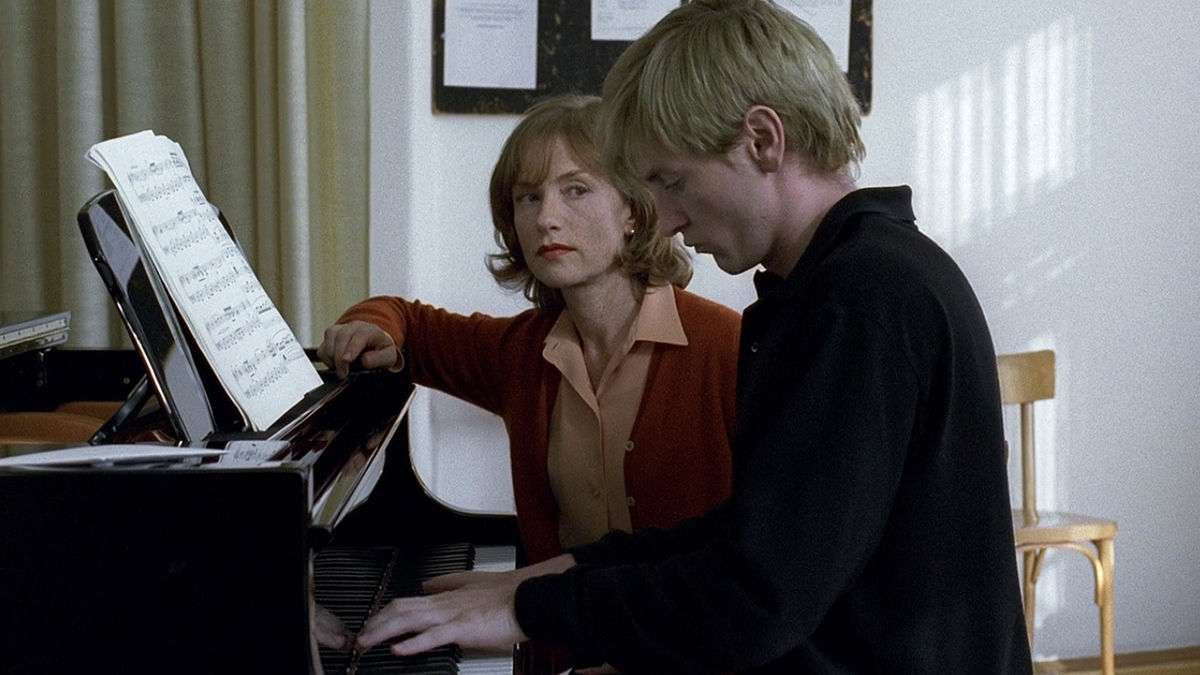
If “The Piano Teacher” were directed by anyone other than Michael Haneke, it would be either deeply mistranslated or drivel. It’s a premise so vulnerable to being discarded as European art trash with its masochistic undertones and moments of B-movie shocks. But Haneke injects a seriousness that elevates the material into a compelling character study and a stirring romance, equally gripping to watch. An adaptation of Elfriede Jelinek’s eponymous novel, it stars Isabelle Huppert as Erika Kohut, an uptight, dictatorial piano teacher, sexually repressed in her private life and living with a tyrant of a mother.
Her life goes for a toss when she meets the talented Walter, a dashing pianist who takes a liking to Erika. We follow their romance, taking them on a rollercoaster of emotions, wreaking havoc on Erika’s guarded vulnerability and farcical seriousness. Haneke’s direction has an inherent flashiness – it’s entirely wrong to say his style is strictly formalist. Some moments feel removed from reality, and it is up to the viewer to ask whether or not it fits in the film. Isabelle Huppert and Benoit Magimel steal the show, single-handedly lifting the entire movie with their endearing performances. Magimel’s Walter stokes the fire in Erika with his chaos, his audacious charm that flirts with Erika’s stern face and tightness – an overt chemistry that’s natural and fits the tone nicely.
2. Amour (2012)
As the title suggests, “Amour” is, without a shadow of a doubt, a love story. This is a good piece of information to retain while watching this largely saddening portrait of grief and death. It’s a different kind of love – affection in the twilight years when the body withers, but the mind stays sharp when the definition of love has grown into dependency rather than romance, with care and attention as the base of all great acts of service. “Amour” captures a love we can never truly grasp unless we’re in the same situation.
When your ailing partner is dying, what does love mean then? Haneke’s style is sparse but wholly effective in this beautiful, emotionally staggering tale of a septuagenarian couple embraced by the talons of death. “Amour” still possesses his claustrophobic formalism, adding to the fact the camera never leaves the couple’s home. Haneke is on a mission to destroy the viewer – it is, quite simply, a fucked-up movie.
Haneke doles out scenes after traumatic scenes of such indescribable tragedy, like a monster. Jean-Louis Trintignant and Emmanuelle Riva are operating at their highest abilities here, creating layered, powerful performances that don’t stray into melodrama. It’s unsettling to see the couple’s emotional strength during their struggles, but that is one of the many loves in “Amour.” Haneke’s most accessible film sees being at his most vulnerable as he confronts his own mortality with a blistering tale on what makes love so important in your life. Watch M.T Vasudevan Nair’s “Oru Cheru Punchiri,” a narrative adjacent movie albeit happier, to take the depressing edge off.
1. The White Ribbon (2009)
“The White Ribbon” was initially conceived as a TV series but banished to development hell when there were no willing financiers to produce it. Haneke then decided to make it into a film, and it’s nothing short of sprawling, novelistic in its proportions, yet so profoundly intimate in what it explores. Haneke’s timeless masterpiece, shot in stark black-and-white, is replete with Haneke’s flair and power right from the first frame. The plot is formed from the musings of a schoolteacher-turned-tailor in rural Germany at the cusp of World War I. Strange events happen in his tightly-knit community – a trip wire throws the village doctor out of his horse, the baron’s son is bonded and mutilated and hung upside down, and the children are all abused.
A sinister evil lurks in this village, and no one’s innocent, not even the children. Haneke sets out to explore ‘the roots of evil’ in “The White Ribbon,” specifically the ignored role of ideology, family, and religion, which is fitting because these are children who will become future Nazis. Haneke injects a sense of detachment with the unnamed adults, the somber cinematography by Christian Berger, and the overall moodiness of the plot.
You can feel the evil more than you can see it. Haneke won the Palme d’Or for this remarkable exploration of true evil. The film delves into the mundane and subtle ways in which evil exerts control over all things manageable. It also examines how this insidious force seeps into unexpected dynamics, such as the intersections of class and gender, and influences the impressionable minds of young adults. It is a kind of cinematic experience; you’ve got to watch it to believe it.














